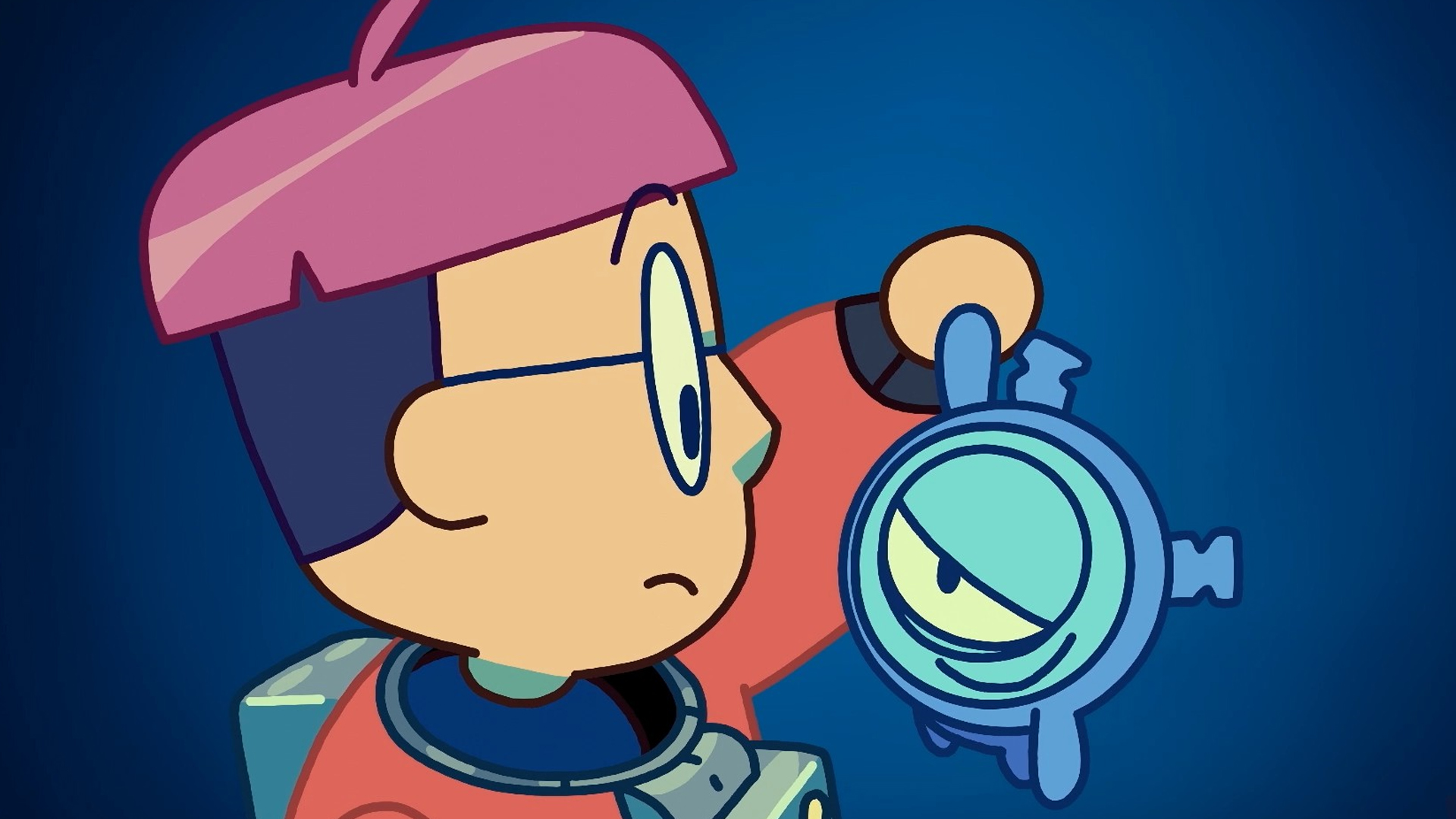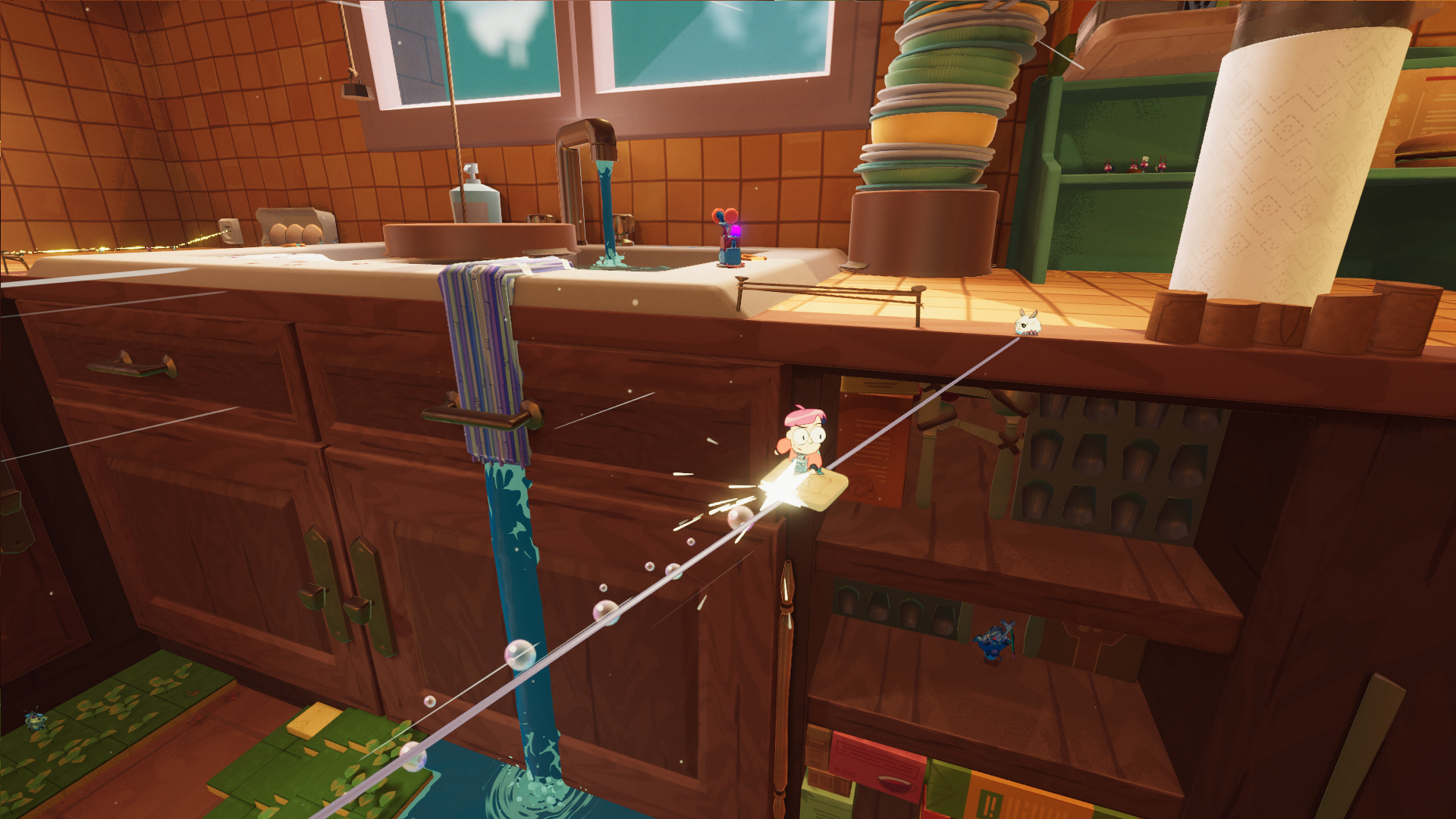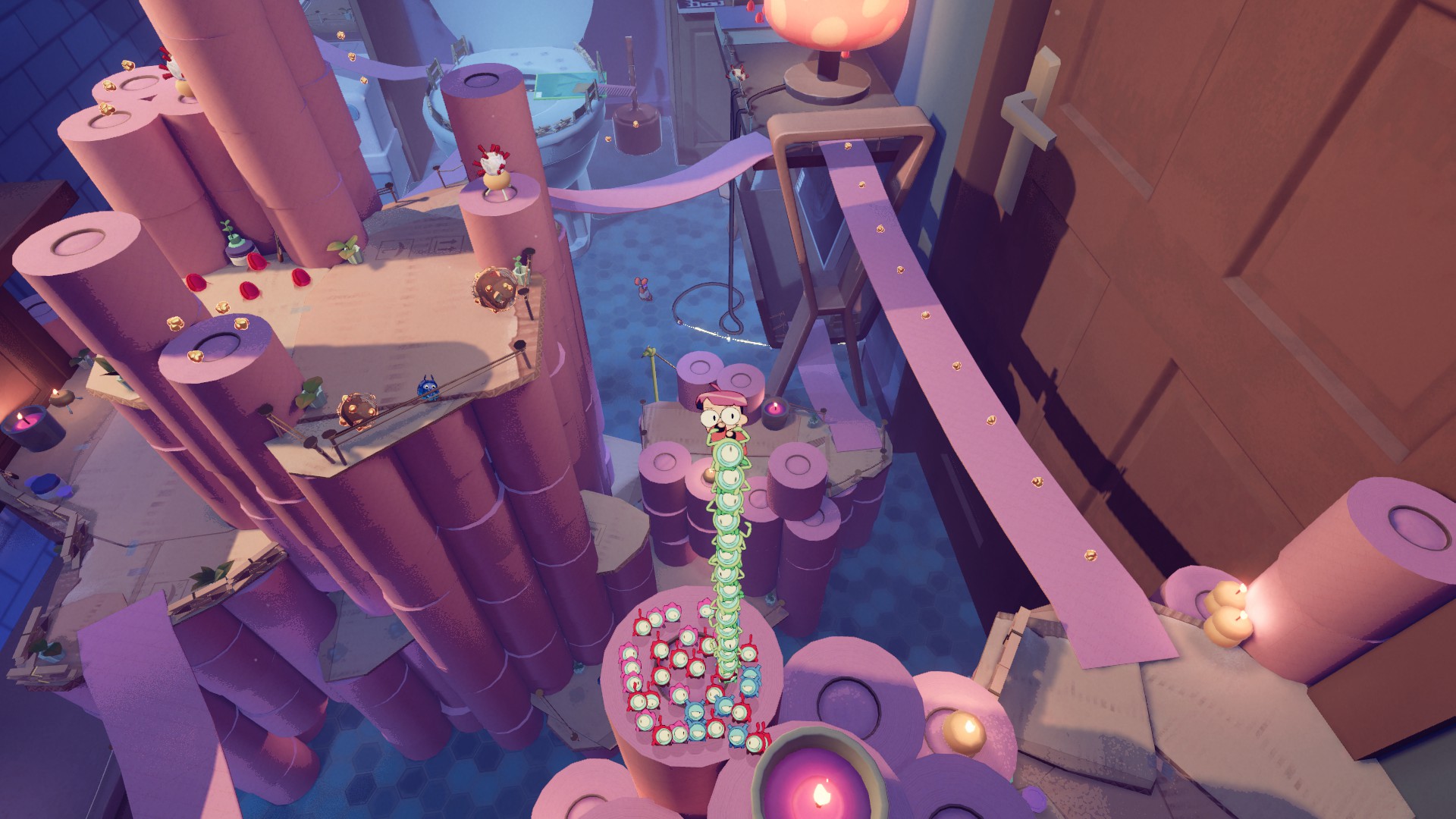Our Verdict
Tinykin's minion management might be shallow, but its platforming shines.
PC Gamer's got your back
What is it? A 3D platformer with Pikmin-ish flavor.
Expect to pay: $25/£19.50
Release date: Out now
Developer: Splashteam
Publisher: tinyBuild
Reviewed on: Intel i7 8700K, NVIDIA GeForce RTX 3070
Multiplayer? No
Link: Official site
Let me get the disappointment out of the way first. In Tinykin, you play a teensy interstellar traveler who commands a legion of microscopic minions to navigate an oversized environment, and yet it's not the PC-compatible Pikmin that I was hoping for. Take a deep breath with me. If we do our mourning now, we can appreciate Tinykin for what it is: a delightful, laidback platformer romp through a world lovingly rendered from a bug's-eye view.
You play as Milodane, a researcher from a distant planet so far in the future that its human populace doesn't remember where they came from. When Milo activates an experimental transporter to chase his hypothesis about humanity's interstellar origins, his teleportation tech doesn't just strand him on another world—it shrinks him to miniature scale, too. Milo awakens in the House, an abandoned '90s-era home populated by an insect society that remembers the House's original owner as an absent deity, and the Tinykin, a race of enigmatic gremlins who uniquely respond to Milo’s commands. As Milo, your goal's a simple one: using your Tinykin, gather six components from the House's bug societies, and reassemble a machine to teleport home.
Tinykin's inspirations are clear from the first moment a dozen of your color-coded comrades are ordered into place with a familiar whistle, marching along to their own synchronized "hut-hut-hut" grunts as they heave an oversized object. But mechanically the similarities are short-lived. Where Pikmin is a remixed RTS, Tinykin is a 3D platformer more in line with something like Banjo-Kazooie, with an even more easygoing vibe.
Yes, you're flinging Tinykin by the dozen to solve all your problems. But there's no real decision-making involved, because there's no way to use them incorrectly. There's a finite number required in each area. You can't waste or endanger them or accidentally drown a whole squad and feel terrible about yourself for a week. In Tinykin, the Tinykin are surprisingly inconsequential.
At first it surprised me how little thought they demanded: the only logic involved is whether or not you currently have enough Tinykin to handle the obstacle immediately in front of you. If yes, then just throw the necessary number of bomb Tinykin until the thing explodes. If no, then just run around and pop a handful of purple eggs until you can carry that corncob. Where Pikmin has you considering when, where, and how to invest your forces, Tinykin only expects you to passively gather them while you scamper around.
If I was reading this, I'd expect this to bother me. But luckily, Milo himself feels great enough to move around that I ended up happy with the place my Tinykin occupied: facilitating my movement through the House, rather than being my only way to engage with it. While Milo's movement toolkit isn't terribly deep, it feels excellent to pilot. He's got a limited-time bubble glider for floating across gaps. In place of a sprint button you're given immediate access to a "soapboard" to skate and grind across the House's solid surfaces—and crucially, it has an endlessly spammable kickflip button.
Whether you're platforming or hurling Tinykin, Milo's actions are all snappy and responsive. Jumping, running, and deploying his bubble glider are all blessedly free from the kind of fumbling that's all too common in platforming elsewhere. I had no stumbling over inexplicable geometry collisions, no missed jumps that I was convinced I'd make. Movement in Tinykin feels clean and satisfying, without any frustrations to make moving through its jumbo-shrunken world anything less than a pleasure.
Keep up to date with the most important stories and the best deals, as picked by the PC Gamer team.
And that's great, because the House is the real star of Tinykin, more than the titular creatures themselves. Its rooms are homes to different sections of bug society, each making up a self-contained level with its own theme and atmosphere. In the den, reverent shieldbugs have erected a cardboard cathedral. The bathroom, meanwhile, has been converted into a perpetual silverfish nightclub. Tinykin's environmental artists get incredible mileage from the simple joy of seeing oversized household objects rearranged into insect-scale architecture and geography. And there's not a spider to be seen. Arachnophobes rejoice.

From the fields splayed out across the greenbacked-sponges of the kitchen-floor farmland, to the thumbtack furniture in the food-tin apartment blocks, Tinykin is dense with delightful visual details. To me, these were the main reward for navigating all its nooks and crannies. Which is good, because frankly, none of the actual collectibles that you gather while moving through Tinykin's rooms were very strong motivators.
Clumps of pollen litter the House's landscape, earning increased duration for your bubble glider if you collect enough in a given room. But meeting that threshold was kind of automatic, achieved easily enough by absentmindedly nabbing nearby clumps while gathering my obligatory Tinykin horde in each area. Meanwhile, collectible lore objects didn't tantalize, because the core mystery surrounding the House and how it relates to Milo's research was one I could handwave an explanation for easily enough. Despite that, there was still excitement when I glimpsed a distant egg or glimmer of pollen—not for the collectible itself, but for what I'd see on the way.
The fiction of this little world left me even less invested in my Tinykin than the mechanics did—in dozens of interactions with bug NPCs, maybe 10 ever had anything to say about them or my uncanny ability to direct them. Neither they nor Milo carried enough charisma to feel integral to the experience, leaving me wondering why, instead of a vaguely Harry Potterish space dweebus, I wasn't a cool ladybug or something. A cool ladybug with infinite kickflips. The writing, in general, doesn't land many hits. When its stratified bug society isn't clumsily dabbling in intro-level political theory, it's a vehicle for cookie cutter referential humor. I'm sad to report that we're still apparently doing "the cake is a lie" jokes in 2022.
But even after making me be a space dweebus, Tinykin delivers the inherent childlike glee of clambering over a small thing that's suddenly very big. That was clearly the goal, and Tinykin doesn’t overstretch its ambitions. It's a joyful, laidback six-or-so hours of platforming in a vibrant little world. No more, no less.
Tinykin's minion management might be shallow, but its platforming shines.
Lincoln has been writing about games for 11 years—unless you include the essays about procedural storytelling in Dwarf Fortress he convinced his college professors to accept. Leveraging the brainworms from a youth spent in World of Warcraft to write for sites like Waypoint, Polygon, and Fanbyte, Lincoln spent three years freelancing for PC Gamer before joining on as a full-time News Writer in 2024, bringing an expertise in Caves of Qud bird diplomacy, getting sons killed in Crusader Kings, and hitting dinosaurs with hammers in Monster Hunter.





